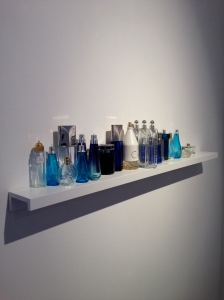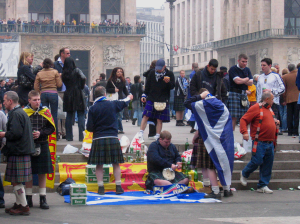
If you are from Scotland and living anywhere abroad at present, it is likely that your friends and colleagues will be asking you one question more than any other- what will happen in the Scottish referendum on the 18th September? The vote- on whether Scotland will move towards complete political independence from the rest of the United Kingdom- is a complex and difficult one. Referendums like these have uncomfortable resonances with recent histories in the countries of the former Yugoslavia, although the result is not likely to be anything like as decisive as the results in Slovenia, Croatia, BiH and Macedonia were in the early 1990s.
A friend in Macedonia once asked me- Does it mean the English will start shooting at you if you vote Yes? The answer is a decisive No. It must be said that, no matter how heated (and in small places unpleasant) the debate in Scotland has become, there is no chance whatever of any armed conflict. Nationalism and the broader movement in favour of independence in Scotland is quite a rare flower in European nationalisms, in that it is civic, democratic and non-violent in character.
The type of ethnic nationalist discourses that have bedevilled ex-Yu since the mid-1980s simply have no resonance whatever in Scotland. No matter where in the world you come from, be it from Dundee or Donji Paprasko, if you have British or EU citizenship and are registered to vote, you have a say. Thousands of Poles, Czechs, Slovaks and other European nationalities will take part in the poll next week, based on their residency status. Meanwhile, the Scottish diaspora, globally, being unregistered, has no say- and quite rightly so, as the vote will not affect their immediate futures or livelihoods.
But, how has it come to pass that this referendum is happening at all, what are the issues, and the possible consequences? This article attempts to fill in the contours of the debate for everyone who is interested in following it.
Roots of the Current Referendum
The distant roots of the independence referendum go back to 1707, and the Act of Union between Scotland and England. England had already acquired the territory of Wales by military conquest in the thirteenth century, and incorporating the Welsh into the English legal system in the sixteenth century. Scotland’s road to Union was more economic in character; after disastrous colonial enterprises at the end of the seventeenth and the beginning of the eighteenth century, Scotland was bankrupt, and Union with England offered the possibility of economic redemption, and a recovery of lost fortunes for aristocratic and business investors.
The Union was bitterly contested by ordinary people- the national poet, Robert Burns, famously denounced the Act of Union in the couplet We’re Bought and Sold for English Gold- / Sic’ A parcel o’ Rogues in a Nation! But by the time that Burns penned this verse, in 1791, the sense of Scotland being a separate nation was beginning to fade, as generations became used to the idea of a United Kingdom. It is a romantic canard that you will hear sometimes, that “Scotland is England’s Last Colony”; as well as being factually untrue (the UK still has a remnant of empire in the Caribbean), it is historically illiterate.

The stark truth is that access to the rapidly expanding colonial markets in the second half of the eighteenth century, and the whole of the nineteenth century, drove the mushrooming of Scottish industry and built fortunes for its best known magnates in slavery, tobacco, coal, iron, steel, shipbuilding, and engineering. By the end of the nineteenth century, Glasgow, with its gigantic engineering enterprises and trade links to all corners of the globe, was deemed by many to be “The Second City of the Empire”, whilst businessman and administration began to refer not to Scotland but to “North Britain”. “North Britain” appeared in business names from hotels to locomotive works; the North British Locomotive Company, based in Springburn, a suburb of Glasgow, was active until the 1960s, and some ageing “North British” hotels clung on in Scottish cities until the early 1980s.
At this stage, with Scotland fully absorbed into the UK imperial project, notions of Scotland re-gaining its independence were the preserve of dreamers, romantics and fantasists. In keeping with the “nationalist revival” that swept Europe at the end of the nineteenth century (ironically, the same drivers that argued for the dissolution of Austria-Hungary and a mystical future “South Slav” nationalism in the Balkans) notions of Scottish independence were confined to the independently minded middle classes. The novelist RB Cunnighame Graham helped to establish the Scottish Home Rule Association in 1886, but although this group put forward motions calling for greater self rule for Scotland seven times between the 1880s and the 1920s, none of them ever came close to being acted upon. Imagine a political party in contemporary BiH calling for the reformation of the Hapsburg Empire, and you will have an idea of how forlorn and marginal Scottish independence was, as a political cause, at this time.
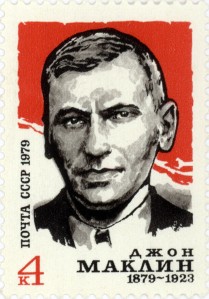
Soviet stamp commemorating the leader of Red Clydeside, John MacLean, issued in 1979.
The mechanised slaughter of the Great War marked the first straw in the wind of where we have got to, today. Working class agitation- particularly in Glasgow under the leadership of John MacLean- saw protest against the widespread and senseless carnage of that conflict as a focus of protest, as well as opportunism from local capitalists in raising rents steeply, and using wartime conditions as an excuse to attack working conditions and wage levels. Glasgow rent strikes steadily grew, through organised militant labour, into what was called “Red Clydeside”- a general strike in 1919, quelled by the then home secretary Winston Churchill sending tanks onto the streets of Glasgow. The London government, with little understanding of the situation on the ground, feared a Communist revolt; MacLean, after all, had been appointed Soviet ambassador at large in Scotland, by V.I. Lenin.

British Army tanks on George Square, Glasgow, at the height of Red Clydeside, 1919
If Red Clydeside was quelled and then incorporated into the British political system, with its leadership joining the ranks of the emerging UK Labour Party at Westminster in the 1920s, the desire for Scotland to have a greater say in running its internal affairs was not really answered. Amidst these great socio-political upheavals, a civic sense of Scottish identity remained intact; through the separate (and established) Church of Scotland; a separate Scottish education system stretching from infant school to university; a Scottish banking system with the right to issue their own disticntive pound notes; and a separate Scottish legal system. Church, education, finance, and law, between them, did more than anything to maintain a community based sense of a separate Scottish identity within the unitary British state, between 1707 and the 1970s. As working and middle class leisure developed in an emerging consumer society, the exploits of Scottish sports teams- particularly the Scottish football team- became another marker of separateness. Over time, as the century developed, the Scottish football team became a carrier of what the theorist and historian Tom Nairn has described as “Cultural Sub-Nationalism”; the carrier of a sense of national identity for a people denied the expression of that identity through political means.

Scotland take to the field against England at Wembley in 1967. Inspired by Rangers winger Jim Baxter, the Scots beat the then World Cup winners 3-2, to become (jokingly) the “unofficial champions of the world”.
In the strictly political sense, the present-day Scottish National Party was formed in 1934, as a result of the merger of two smaller parties. In its early days, it was a marginally important, right wing formation, focused more on the cultural symbols of a nation past than the needs of the nation present. It was not until 1967, with the party moving towards a left leaning orientation, that the SNP had a member elected to the Westminster parliament for more than a few weeks- the iconic Winnie Ewing. Ewing’s election in Hamilton was the beginning of a period of real momentum for the SNP, until 1979 and the election of Margaret Thatcher.
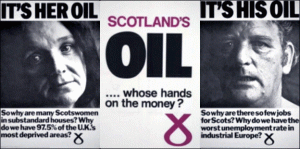
Scottish National Party campaigning poster, 1970s
For the first time in the 1970s, the SNP moved from the irrelevant fringes to the centre of political life. The discovery of large reserves of oil in the North Sea, off the North East coast, in 1973, transformed the fortunes of the party, who gained much support and sympathy with their “It’s Scotland’s Oil” campaign to 1979. But the major event of the second half of the 70s was the campaign for Scottish devolution. A weak Labour government, hobbled by industrial unrest and a very narrow parliamentary majority, dependent on the support on minority parties in Westminster, including Scottish and Welsh nationalists, introduced a bill- fiercely opposed by some in their own ranks- for devolved assemblies for Scotland and Wales. These were not independent parliaments, but equivalent to the West German federal Lander– giving significant autonomy to both territories, with defence, foreign policy and tax raising powers reserved to Westminster control. In the ballots, the Welsh rejected their proposed assembly by a 4:1 majority; Scotland voted narrowly in favour, but thanks to the drafting of the bill, insufficient people voted for a devolved assembly for it to become law and happen. A few months later, the severely weakened Labour government fell, and ushered in the Margaret Thatcher era.
Thatcher, Blair, Neo-Liberalism & Scotland

Conservative Party election poster, designed by Saatchi & Saatchi, 1979
Margaret Thatcher’s government was elected in the middle of 1979, inheriting an economy that was in major crisis (Britain had been obliged to seek a loan from the IMF in 1976), on a ticket of de-regulation and de-industrialisation. These twin policies were to hit Scotland particularly hard in the 1980s; industrial developments fostered by governments in the 1960s were simply closed down. The Linwood car plant closed in 1981, followed a decade after by the Ravenscraig steelworks. With less fanfare, heavy industry concerns across the Scottish Central Belt, many from the “North British” era, also closed or drastically reduced jobs and productivity. The bitter miner’s strike of 1984/5, the defining domestic political issue of the 1980s, decimated Scottish coalfields in Ayrshire, South Lanarkshire and Fife; today there is only one surface coal mining operation left in Scotland, with all the deep mines closed (despite having several centuries’ worth of coal between them still unmined).

Scottish Miners’ leader Mick McGahey addressing a crowd in Glasgow, spring 1985
Thatcher’s victory in the Miners’ strike saw her build up the political capital to force through a raft of anti-Trade Union legislation in the years that followed; rights to strike and freedoms of movement associated with strike activity, were heavily curtailed. The Thatcher period saw an end to the “Welfare State consensus” that had prevailed in the UK since the end of the Second World War; inspired by the dogmas of Milton Friedman and monetarist economics, Thatcher’s concern was to build a “share-owning, home-owning democracy” where the actions of the state were severely curtailed; a rolling programme of privatisations, of nationalised industries and utilities, was ruthlessly pursued. Scotland- and the industrial heartlands of Northern England, the Midlands and Wales- stood largely opposed to such policy; the Labour Party, in a period of soul-seaching, in-fighting and re-definition, was largely impotent at this period; the Scots and Welsh nationalists again an irrelevant fringe who seemed to have blown their big chance at the end of the 1970s. A second devolutionary vote was to come around sooner than anyone at the end of the 1980s would have predicted, however.

The hard line Thatcherite era came to an abrupt end when she was obliged to resign, following a dwindling of support for her in Conservative ranks, in November 1990. A major factor in her removal was the riots and civil disobedience caused by her hugely unpopular Poll Tax policy– a policy where Scotland was used as a guinea pig, a year before the rest of the UK. The Poll Tax was not only a sign that Thatcher was losing touch with reality, it was also one of the greatest recruiting sergeants to the idea of a devolved Scotland.
Although a very weakened Tory government returned to power in April 1992, under John Major, it was clear that internal policy debates within Labour at that time would determine the political direction of the UK as the twentieth century neared its end. The party re-affirmed a commitment to introducing a devolved parliament for Scotland, and Assemblies for Wales and Northern Ireland. When Labour party leader John Smith died suddenly of a heart attack in 1994, his successor Tony Blair- privately thought to be a devolution-sceptic- saw this part of Labour policy as an important part of the deceased Smith’s policy legacy for the party. After Labour’s crushing general election victory in May 1997, Blair, and his Scottish secretary Donald Dewar, moved quickly to steer the legislation through Westminster; in a 1997 referendum, Scots voted overwhelmingly in favour of establishing a devolved Scottish parliament.
Issues

Alex Salmond (l), First Minister of Scotland and SNP Leader; Alistair Darling (r.), former Labour Chancellor and leader of the Unionist “Better Together” campaign
With the parliament so recently established, how has it happened that Scots want so much more so soon?
The architecture of Scottish devolution was meant to ensure that no party had an overall majority; the 129 members are elected by a mixture of traditional first past the post, plus proportional representation “list” members. In 1999 and 2003 Scottish Labour, under Donald Dewar then Jack McConnell, were the biggest party; in 2007, the SNP under Alex Salmond formed a minority government; then, in 2011, in the context of a meltdown of the UK Labour Party, under Gordon Brown’s disastrous premiership, and a defeat to a Conservative-Liberal coalition in Westminster, the SNP romped home by a landslide victory in the Scottish parliament elections; gaining the outright majority that parliamentary arithmetic was supposed to guard against. The old Labour figure George Robertson, who rose to be secretary-general of NATO, predicted that “devolution will kill nationalism stone dead” at the end of the 90s, is now widely mocked for such a foolish forecast.
The key plank of the SNP’s programme is holding a referendum on an independent Scotland. The question that will be asked on the ballot paper is simple: “Do You Agree that Scotland should be an Independent Country?” with voters having to respond Yes / No.
There is consensus amongst all the parties involved that Scotland could be an independent country. The disagreement lies in whether is should become one, or not. In taking the decision, several factors will come into play.
Currency
The ability of an independent Scotland to continue to use the UK pound has been a key debate throughout the campaign. The “Better Together” campaign, led by former Labour Chancellor of the Exchequer (Minister of Finance) Alistair Darling, has insisted that if Scotland votes for independence, it will have to develop its own currency or use the euro, as it will not be permitted to use the pound. The three leaders of the main parties at Westminster have united to state that they will not allow an independent Scotland to use the pound.

For a while, this narrative had some impact on voters. Increasingly, however, it seems untenable. The “Yes” campaign, of which the SNP is the largest but not the only component, has advocated a “currency union” between an independent Scotland and the rest of the UK, with the Bank of England as lender of last resort, and setter of interest rates. Increasingly, the No campaign’s intransigence over the pound seems like a bargaining tactic- at least in the eyes of Nobel-prize winning economist, Joseph Stiglitz. More than anything else, the mechanism by which an independent Scotland could be prevented from using the pound is not clear. Scottish banks retain the right to print their own bank notes (just try changing one of these at a Sarajevo mjenjačnica, folks), and in Europe, Montenegro and Kosovo use the Euro without formally being part of the Euro mechanism. Brussels may not like it, but there’s not a hell of a lot they can do about it.
Relations with the EU
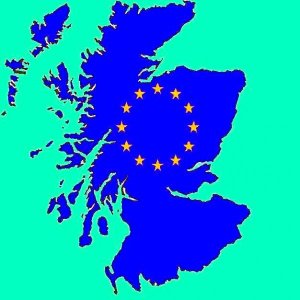
Relations with Europe are also a key area of dispute and uncertainty. In the UK, the small UK Independence Party is picking up a lot of support and votes from the South of England through to the old Labour-voting former industrial heartlands in the Midlands and the North, by calling explicitly for a British withdrawal from the European Union. In so doing, they are outflanking the governing Conservative Party from the right, and to some extent forcing the Conservatives to ramp up their anti-European rhetoric.
The trouble is that since 1997 the Tories have had virtually no influence in Scotland…currently they have only one Scottish MP out of 59 sent to Westminster. Further, Scottish voters are generally much more sympathetic to the EU and the idea of politically being part of Europe, than their counterparts in England. Nationalists have made much play of the Tory and LIberal lack of “democratic legitimacy” in Scotland; if, after a No vote, the UK electorate voted to leave the EU, against the wishes of the Scottish people, then such concerns would be ramped up a hundred fold.
Conversely, the No campaign have sought to play on fears and uncertainties surrounding Scotland’s future in the EU, if there is a Yes vote. This would lead to a complex set of international rules and laws being brought into play; if Scotland were to secede, then England, Wales and Northern Ireland would probably be regarded as the old UK’s “successor state”, leaving Scotland “out in the cold” and having to re-apply to join the EU. According to the No side, this would be catastrophic for Scottish business- particularly farmers, who are heavily dependent on EU subsidy.
The trouble with this issue is that no one knows how it will play out. This is an unprecedented situation for the EU- no member state has ever before faced the possibility of part of its territory seceding. The general view is that Scotland would have to re-apply to join the EU, but that realpolitik would dictate that this is a foreshortened process; there is no way the EU commission would want an energy-rich country out of the club for the long term, as it is in nobody’s interest. However, governments in other EU countries facing independence and nationalist questions- most notably Spain and Italy- may disagree. Those who prefer to refer to the “Velvet Divorce” between the Czech and Slovak Republics in 1993, have to concede that this divorce took place outwith the confines of the EU, and therefore is not really a helpful example in this context.
Oil
The SNP’s old campaigning slogan- “It’s Scotland’s Oil”- has been reformulated in contemporary times to have a softer message. Such simple sloganeering in contemporary times seems selfish and grasping, particularly in the global context of growing awareness of the impact of burning oil on the environment, and its increasing scarcity as a resource. Those in favour of independence now argue that Scotland should establish a “sovereign wealth fund” along the lines of the one established by Norway, to ensure that the profits from oil and petrochemicals are shared as widely as possible.
The Better Together campaign argues that the oil in the North Sea is running out, and that it is crazy to base the nation’s future economic strategy on a dwindling resource. Again, in contradictory fashion, the Westminster government has announced plans to introduce the highly controversial “fracking” (“hydraulic fracturing”) technique to Scotland, to try and capitalise on what they claim is a potential shale gas bonanza. Experience in the United States and the massive environmental damage it can cause are prominent in Yes campaigners arguments.
Moreover, yes campaigners point out that significant Oil reserves will be available to underpin an independent Scotland’s economy for a minimum of 50 years, arguing that this is more than sufficient time to develop the infrastucture and strategic priorities for a post-oil economy, reliant on green technologies still in development..
Nuclear Weaponry
The UK’s fleet of nuclear-armed, nuclear-powered submarines is based at Faslane, a naval base on the West Coast of Scotland. The SNP- and the wider Yes campaign- have insisted that the removal of these weapons, and the subsequent creation of a nuclear-free Scotland, is a non-negotiable item in the event of a Yes vote.
Better Together have come at the issue from a jobs angle. they claim that thousands of jobs will be lost if Faslane is closed after the nuclear fleet is moved. In response, the SNP government in Edinburgh have earmarked Faslane as the putative Headquarters of a newly independent Scottish Defence Force, safeguarding jobs. No campaigners remain unconvinced by this line, however, given that the vast majority of the Yes campaign are minded to steadily reduce military spending in an independent country.
National Health Service
The National Health Service (NHS) was a UK-wide service established in 1948, by the first post-war Labour government. In recent times, the demands on the NHS of an ageing population, and by younger people who expect a consumer-style tailored experience from a state owned service, have stretched demand to breaking point, and debate across the UK rages about the best way to take healthcare forward in the years to come.
In England, the privatisation by stealth of the NHS was ushered in by the new Tory-Liberal coalition, with the NHS reform bill introduced early in the term of the new government. This opens up many aspects of the NHS to “marketisation” and users worry that the guiding principle of “free at the point if use” is under threat; they fear a breaking up of the NHS and a headlong move towards an American style system of health insurance. Westminster vigorously denies that they are in a privatisation process, as such a move would be toxic in terms of public opinion; however, it is a line that is increasingly tenuous and lacking in credibility.
Yes campaigners claim that a Yes vote is the only way to preserve a free-at-the-point-of-use Health Service, with tax revenues from oil and monies saved from differential tax and foreign policies covering the bill. No also claim that the NHS is under threat from independence, how exactly is not clear.
There are of course other issues at stake in the referendum, but these are the main areas of contention that come up time after time. Note: none of these issues have ethnicity or appeals to nationalist myths at their core. Both campaigns are cross party. The “Yes” side is dominated by the SNP, but also includes smaller parties such as the Scottish Greens, Scottish Socialist Party, Scottish Communist Party, and also members from Labour and the Liberal Democrats, who disagree with their leadership’s Unionist line. “Better Together” is dominated by the Labour Party, supported by the majority of the Liberal Democrats and the whole of the Scottish Conservatives.
Given the deep, deep unpopularity of political Conservatism in Scotland, a legacy of the high-handedness of Margaret Thatcher, however, the Tories have taken a much lower-key role than might have been anticipated; if Conservatives were to take a more prominent role they would simply damage the No campaign’s chances of success. It has been a difficult sell for Labour activists to campaign alongside Conservatives, and privately Labour sources worry that their party has been severely damaged by their uncomfortable alliance, in the No campaign, with otherwise bitter enemies.
What will the outcome be?
This is a remarkable moment to live through in Scotland, as this campaign has caught the imagination of the electorate like no other. Even voters who normally greet Scottish and Westminster elections with a cynical arched eyebrow and indifference, have been galvanised in recent times by the campaign; voters have registered to take part in large numbers, and joined campaigns as activists. The “Yes” campaign in particular has been a tremendous grassroots affair, with the official campaign sidelined in some areas by the work of local organisations or the autonomous “Radical Independence Campaign”. Better Together have relied more heavily on endorsements from established figures in business, economics and show business, and the tacit and sometimes overt support of the much of the mainstream media, north and south of the border.
Until recently, it seemed that the chances of the Scottish people voting Yes were remote. Polls consistently showed Better Together between ten and twenty points ahead in voting intentions; one poll, at the beginning of summer 2014, had the margin at as much as 61-39% against independence. Of particular worry to the Yes side was the unpopularity of their case amongst women voters, and the over-65s- the demographic most likely to vote in UK elections.
Polls last weekend, however, showed a dramatic narrowing of the polls, and in one case showed “Yes” as having taken a narrow 51-49% lead; voting predictions particularly amongst women, had improved dramatically. This poll has had the effect of waking up what had been a rather complacent Westminster political elite, who seemed to have believed too much of their own publicity; this week, the papers are full of the possibilities of Scotland breaking away from the rest of the UK, and the impact it would have. The pound tumbled on yesterday’s currency markets as international investors reacted to the possibility of the UK ceasing to exist in its current form.
If Scotland votes Yes, there will be a period of negotiations, with a Scottish cross party group, led by SNP First Minister Alex Salmond, negotiating terms with the Westminster government. Once that deal is concluded, Independence Day for Scotland is set at 24 March 2016; giving a transition period of eighteen months before the UK ceases to exist. England, Wales and Northern Ireland will continue as the “United Kingdom” successor state; the unitary United Kingdom will be changed to “United Kingdoms” after Scottish independence has been confirmed.
A No vote contains just as much uncertainty as a Yes. Westminster, in something of a panic at the sudden closeness of the outcome, has wheeled out former Labour Prime Minister Gordon Brown, to offer a package of “further powers” for Scotland if it votes no, although they refuse to be drawn on what those powers might be. Some voters may take them at their word; Yes-minded voters fear that if the vote is No, Westminster will act quickly to strip away the powers of the devolved Scottish parliament to hold future referendums on Independence. The refusal to be specific as to what powers might be on offer lends itself to a cynical reading of this belated “offer” from the UK government. The issue typifies the rather clumsy handling of the whole referendum by David Cameron’s Tory-led coalition, strengthening suspicion that he is rather out of his depth when handling this complicated and constantly evolving historical process. A “Yes vote will almost certainly force Cameron’s resignation as Prime Minister- and perhaps that of Ed Miliband, too, the Leader of the Opposing Labour Party, who has consistently struggled to build a coherent political narrative or alternative to the Tories.
The result, having seemed for so long to be a foregone conclusion, is all of a sudden far too close to call. Only the brave would make a prediction for definite on which way it will go. But, whatever the outcome, the nature of the UK, and its four constituent members, is in a process of irreversible change- now and into the future.
Strap in for the ride!
Jon Blackwood


